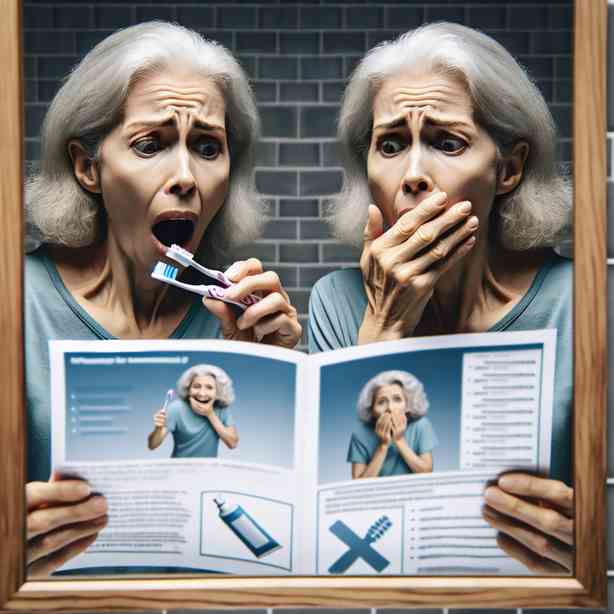
Many people go through life without giving much thought to their daily routine of brushing their teeth. However, when you stumble upon the realization that you’ve been brushing wrong for years, it can be quite a revelation. This awareness often leads to deeper questions about oral hygiene, dental health, and the ways we can improve our routines for better results.
Brushing your teeth is an essential part of maintaining oral health. It helps remove food particles, plaque, and bacteria, all of which can lead to cavities and gum disease if not addressed. Yet, despite its importance, it’s easy to assume that simply using a toothbrush and toothpaste is enough. Unfortunately, that is not always the case. Many of us may not be aware of the correct techniques and methods necessary for effective brushing.
One of the common mistakes people make is using the wrong toothbrush. Many opt for hard bristled brushes, thinking they will provide a more thorough clean. However, this assumption is misleading. Hard bristles can lead to gum recession and enamel erosion, causing more harm than good. Soft bristled brushes, on the other hand, are often recommended by dental professionals because they effectively clean without damaging the gums and enamel.
In addition to using the right toothbrush, the technique you use plays a crucial role in the effectiveness of your brushing. A common error is brushing too aggressively. Many believe that applying more pressure will result in a cleaner mouth, but this is not necessarily true. Ideally, you should hold your toothbrush at a 45-degree angle to your gums and use gentle, circular motions to brush each tooth. This method effectively removes plaque while minimizing the risk of gum damage.
Furthermore, the duration of brushing is another critical aspect that many overlook. The general guideline is to brush for at least two minutes, but many people rush through this process. A good approach is to spend about 30 seconds on each quadrant of your mouth, ensuring that you give equal attention to all areas. This not only guarantees a thorough cleaning but also allows you to enjoy the act of brushing, making it a more mindful experience.
Beyond these techniques, the choice of toothpaste can also significantly impact your oral health. While most people tend to choose toothpaste based on flavor or packaging, it’s important to consider the ingredients as well. Toothpaste that contains fluoride is highly recommended by dentists because fluoride helps strengthen tooth enamel and protect against decay. Additionally, if you have specific dental concerns, such as sensitivity or gum issues, there are specialized toothpaste options that can provide targeted benefits.
Another important aspect of oral care is the use of mouthwash. Many people view mouthwash as just an optional bonus to their routine, but it can serve a substantial purpose. Antiseptic mouthwashes can help kill bacteria, reduce plaque, and even freshen your breath, making them a beneficial addition to your dental hygiene routine. However, it’s important to choose a mouthwash that suits your individual needs and to use it correctly, usually after brushing and flossing.
Speaking of flossing, this is often the most neglected part of oral hygiene. Brushing alone does not remove all the food particles and plaque from between the teeth, which is where gum disease often begins. Daily flossing is essential to reach areas that a toothbrush simply cannot, fostering overall gum health. If traditional dental floss is challenging for you to use, consider alternatives like floss picks or water flossers, which can be more user-friendly and equally effective.
After understanding these components, you may find yourself wondering how long you’ve been brushing incorrectly. It might be easy to become frustrated or discouraged by this realization, but it’s essential to approach it with a positive mindset. Learning new techniques and best practices is an opportunity for growth, and small adjustments can lead to significant improvements in your oral health.
As you implement these changes, it’s wise to keep in mind the importance of regular dental check-ups. No matter how diligent you are with your brushing routine, visiting a dental professional at least twice a year is crucial for maintaining optimal oral health. These visits allow for professional cleanings and early detection of potential issues, which can save you from more extensive and costly treatments down the line.
Additionally, if you notice any changes in your oral health, such as bleeding gums or persistent bad breath, it’s advisable to consult with your dentist promptly. Early intervention can often prevent more severe problems and set you on the right path toward a healthy mouth.
Becoming more conscious of your brushing habits is just one step toward better oral hygiene. You might also want to consider how your overall lifestyle affects your dental health. Eating a balanced diet, minimizing sugary snacks, and staying hydrated all contribute to a healthier mouth. Moreover, quitting smoking or using tobacco products can have a dramatic impact on the state of your gums and teeth.
Ultimately, the discovery that you’ve been brushing wrong for years can serve as a powerful catalyst for change. Instead of feeling overwhelmed, embrace this opportunity to educate yourself about proper dental care and invest in your oral health. With the right knowledge and practices, you can improve your brushing routine and cultivate a healthier, brighter smile.
In conclusion, it’s never too late to make changes to your oral hygiene routine. By using the right tools, adopting proper techniques, and making informed choices, you can significantly enhance your dental health. As you embark on this journey, remember that every small step counts. Your smile is a valuable asset, and taking care of it is an investment in your overall well-being. Take pride in your commitment to improving your brushing habits, and enjoy the benefits of a healthier mouth for years to come.


